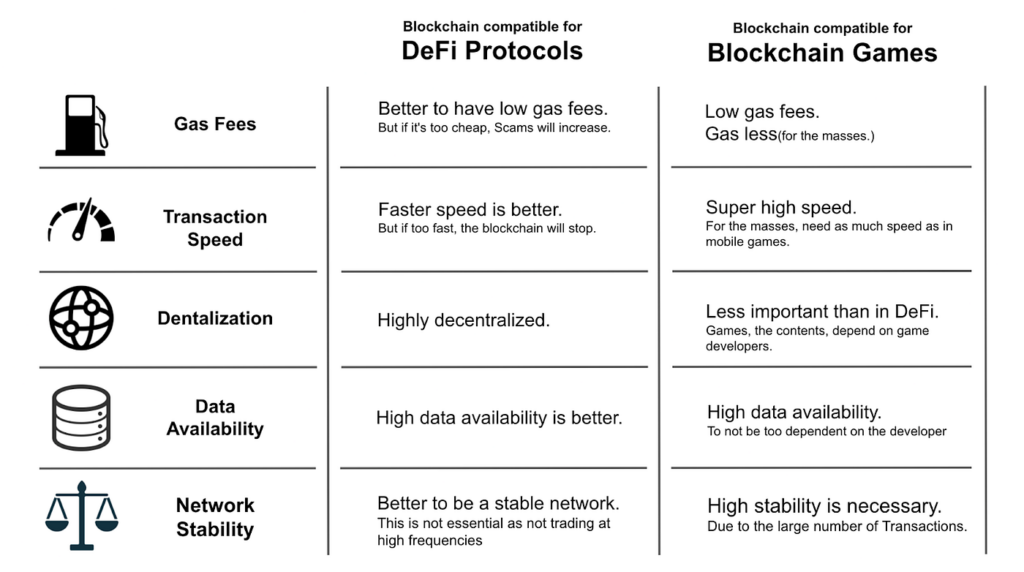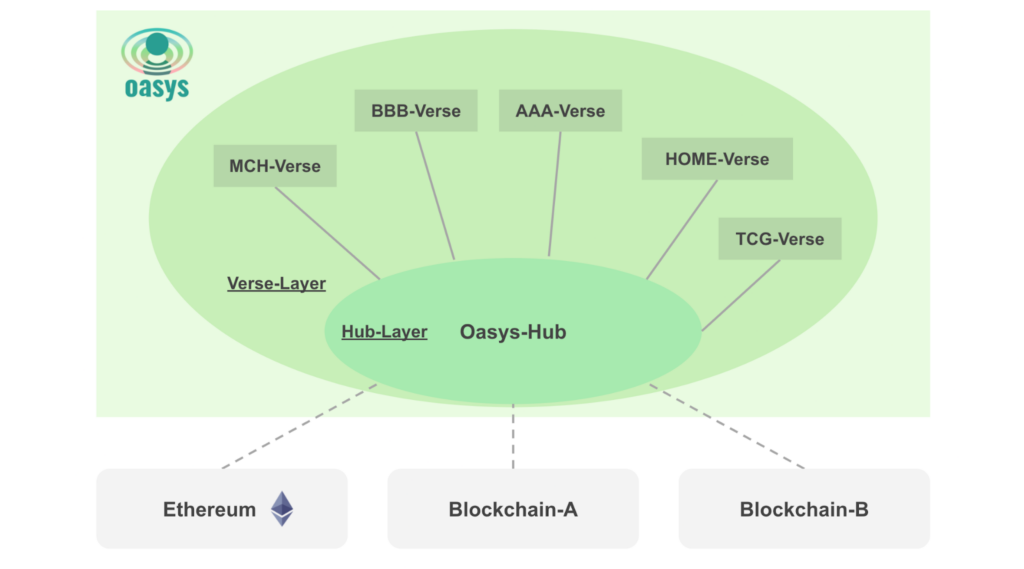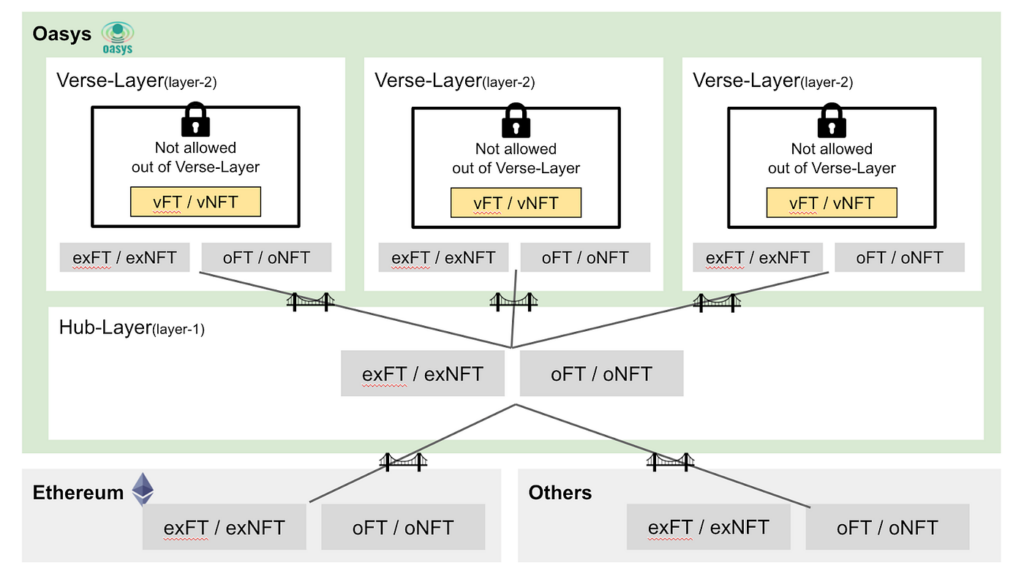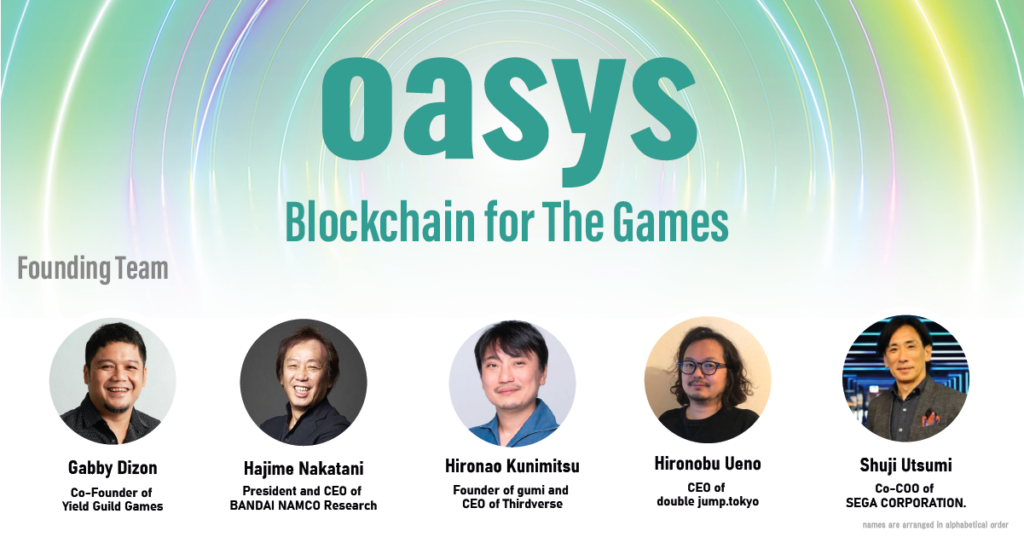Vision
Oasys is built for game developers, offering a high-speed, zero gas fee experience to users by combining the best of public L1 and private L2 blockchain technology solutions.
Different people define the term “metaverse” in many ways, but commonly, people think of a “digital world,” whether that world exists digitally in 3D, VR, or Discord. This possibly means each company, game, and content creator may also have a different view of the digital world; thus, many metaverses can be built. From a user’s perspective, we can imagine a future where we go into different metaverses, just like we use Twitter, Discord, and Facebook for various purposes. This is why we call it the Multiverse Era.
In this future of multiverses, pseudonyms, avatars, wearables, or machines you drive will be an expression of your identity, and you will want to use them across all the different metaverses. This is similar to the world in the movies, which is what people typically imagine the metaverse might look like.
Of course, various issues need to be solved for such interoperability. Still, there needs to be a mechanism to guarantee the ownership of digital assets for each metaverse neutrally. The best solution at the moment is to use blockchain and NFT technologies.
Oasys aims to provide the foundation for a game-centric metaverse and be a hub for a multiverse where many diverse metaverses are connected.
Problems: Suitable Blockchain for Games and Problems to be Solved
Overview
The core team of the Oasys project has been working on blockchain games and NFTs since 2018. “My Crypto Heroes” is one of the many achievements.
DeFi dramatically increased awareness and expanded the market in 2020, as did NFTs in 2021. Thanks to the market’s growth, many blockchain games have been created. However, we have realized many problems with the existing blockchain to implement blockchain technology in games to become widely played.
1. Differences of Indicators for Between DeFi and Blockchain Games
Capabilities blockchain games required from blockchain are not the same as DeFi needs since they operate differently.

TVL (Total Value Locked)
TVL refers to the total amount locked to a particular contract and is the primary measure of DeFi’s traction. Considering DeFi’s characteristics of locking funds, TVL is a rational indicator of DeFi’s reliability and popularity. On the other hand, locking funds is less common in blockchain games, so TVL is not an appropriate measure for many blockchain games.
Transaction Volume
Transaction volume in blockchain games is massive compared to DeFi. Transaction volume will be incomparably significant than DeFi to create widely acceptable full-scale blockchain games. The blockchain needs to be designed to withstand this.
2. Blockchain for DeFi and Blockchain for Game
Given the above characteristics, the blockchain requirements differ for DeFi and blockchain games.

Blockchain Suitable for DeFi
Since DeFi locks up funds, a high level of security is of utmost importance. Therefore, decentralization and data availability are prioritized, and network stability and transaction speed are less important.
In this point, Ethereum is a good blockchain for DeFi, even if gas fees are high.
Blockchain Suitable for Game
Currently, some of the newest blockchains take advantage of low gas fees and high transaction speeds.Transaction speed often slows down or doesn’t keep stable when transactions are concentrated. Therefore, those blockchains are not appropriate for games with a large number of transactions.There are several ways to keep networks running stable at any time, such as “ making block time longer,” “ raising gas,” “ making block sizes smaller,” and “restricting the number of nodes. Still, none of these are essential solutions because they fail decentralization or cause high gas fees. To make blockchain games mass-adapted, it needs to be user-friendly with a transaction speed as fast as an off-chain server and zero gas fees, so users will feel like they’re not even using blockchain technology.
Solutions
Overview
Oasys is a multi-layered EVM-compatible PoS public blockchain that solves game developers’ struggles with other blockchains.

Hub-Layer: High Scalability, High Data Availability, High Network Stability
The Hub-Layer is specialized for storing and exchanging data securely and in a stable manner, so it does not allow applications to run directly. The layer maintains high data availability as all data on Oasys is stored. Block time is set to every 15 seconds , the same level as Ethereum, to ensure stable data transmission to globally distributed nodes. With the same level of network stability as Ethereum, the Hub-Layer has enough resilience to operate with thousands of Verse-Layers connected.
Verse-Layer: Oasys Layer-2 Technology
The Verse-Layer is the layer 2 blockchain on Oasys. The layer can operate as a permissioned chain. While there are several layer 2 options, our solution is customized Optimistic rollups at this moment.
Token Design: Three Types of FT/NFT
Fungible Token (FT) and Non-Fungible Token (NFT) are essential assets for tokenomics in the ecosystem. Thanks to the unique layer structure, Oasys offers three types of token designs for FT/NFT.

- vFT/vNFT can be minted on the Verse-Layer. The token can only be used with certain Verse-Layers. This type of FTs (e.g. in-game currency) and NFTs (e.g. IP) can not be cross-chain bridged.
- oFT/oNFT can be minted on the Hub-Layer. The token is interoperable and is available on all Verse-Layers. Also, it can be sent to another blockchain by a cross-chain bridge.
- exFT/exNFT is a token minted on a network outside of Oasys. They are available on Oasys’ Hub-Layer and Verse-Layer via cross-chain bridges.
In a game on the Verse-Layer, you can take advantage of these three types of token design and flexibly issue them for a game. For example, vFT can be issued as an in-game currency that is not affected by DeFi outside of the game. Assets such as land and weapon can be minted as oNFT, and characters in the game can be minted as vNFT.
Tokenomics
Overview
Oasys’ native token is the OAS token, and the total supply at launch is 10 billion tokens. After six years of the mainnet publication, the additional supply of staking rewards will be determined through decentralized governance by OAS tokens
Token Utilities
OAS tokens currently have four uses.
1. Gas Fees
Due to the architecture of Oasys, the Verse Layer pays gas fees for transaction roll-ups to the Hub Layer.
2. Decentralized Governance
OAS token holders can participate in Oasys’ decision-making through decentralized governance. Proposals include changes in inflation rates through staking, treasury uses, etc. For more information on decentralized governance, please see the following categories
3. Staking Rewards
Staking with OAS tokens allows you to receive staking rewards.
4. Payment
OAS tokens can be used to purchase NFTs and other products.
Initial Token Allocation
The total initial supply is 10 billion OAS which will be distributed according to the following allocations.

Founding Team
Oasys is founded by the industry’s top game developers and Web3 companies and organizations. The Founding Team is formed by representatives from these companies and organizations.

Gabby Dizon, Co-Founder of play-to-earn gaming guild, Yield Guild Games.
Hajime Nakatani, President and CEO of BANDAI NAMCO Research.
Hironobu Ueno, CEO of double jump.tokyo.
Hironao Kunimitsu, Founder of gumi and CEO of Thirdverse.
Shuji Utsumi, entertainment business innovator and founding member of PlayStation, co-founder of Q Entertainment, and currently Co-COO of SEGA CORPORATION.
Ready to enter Oasys?
Website: https://www.oasys.games/